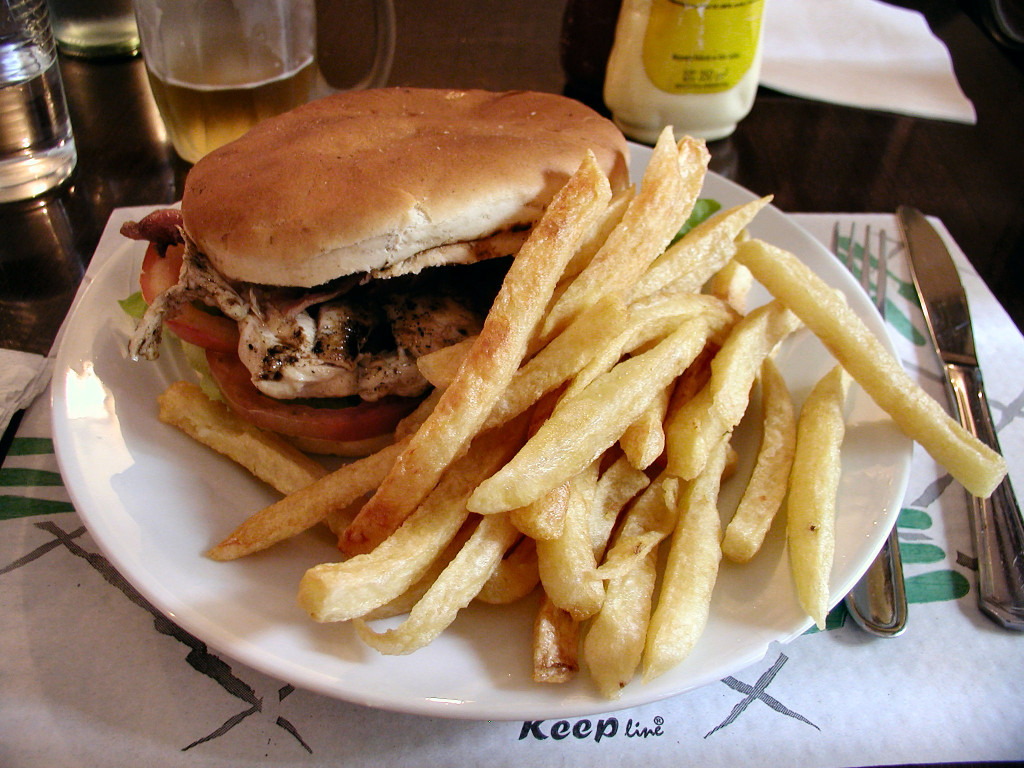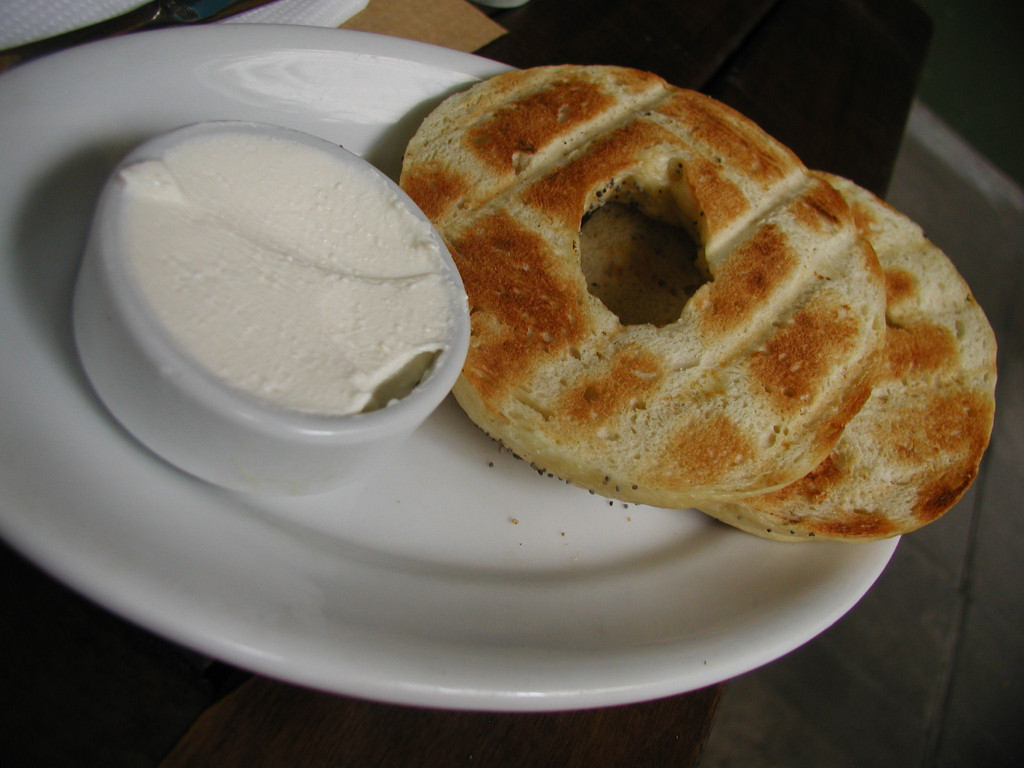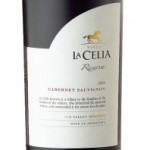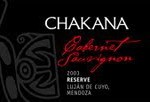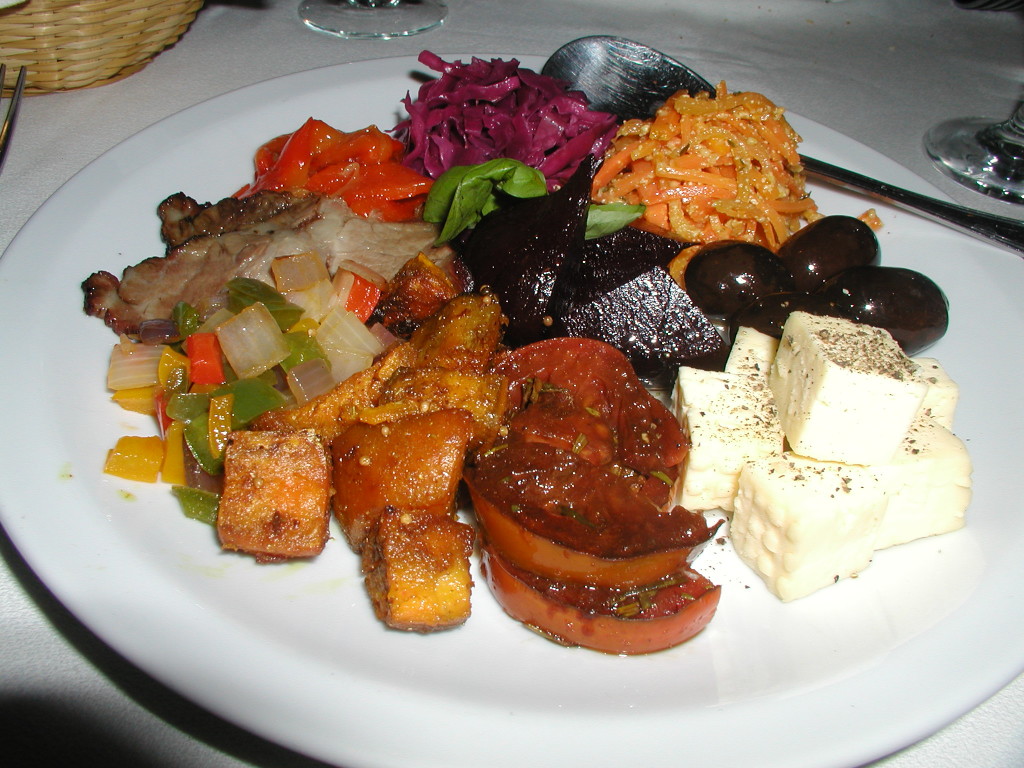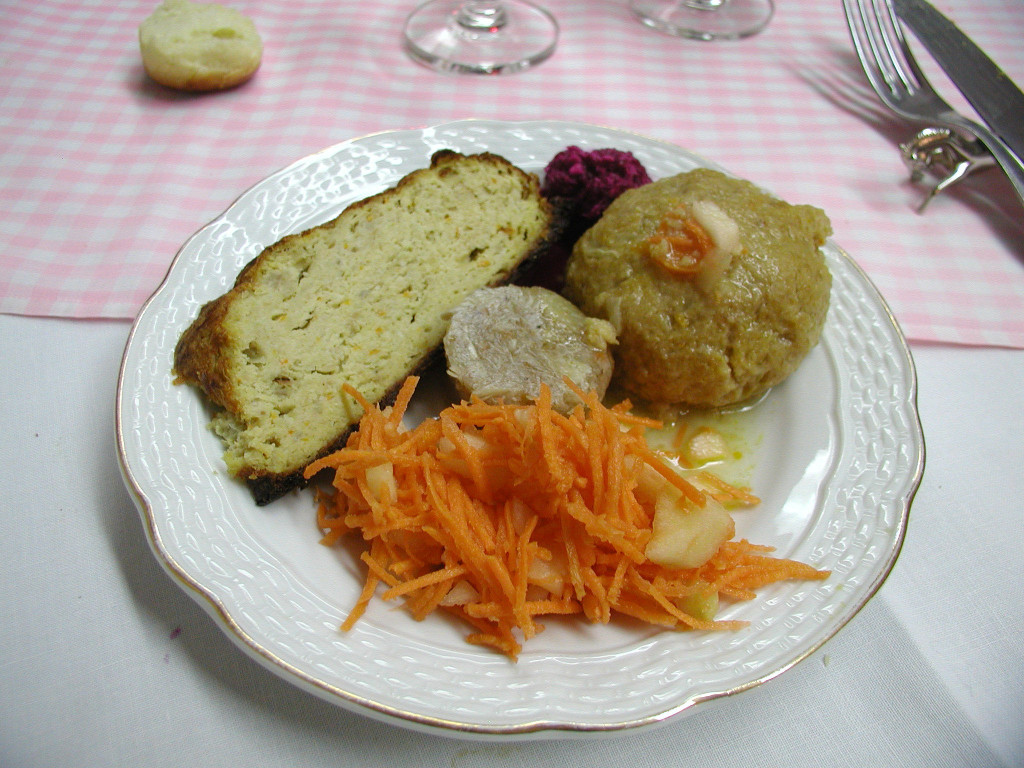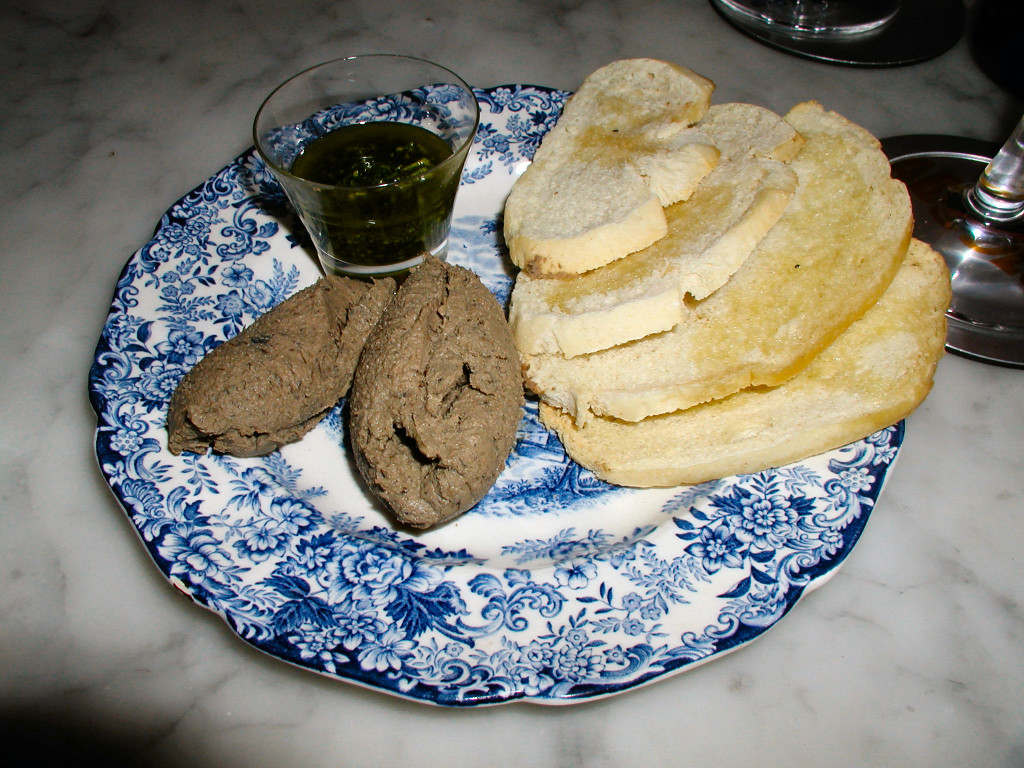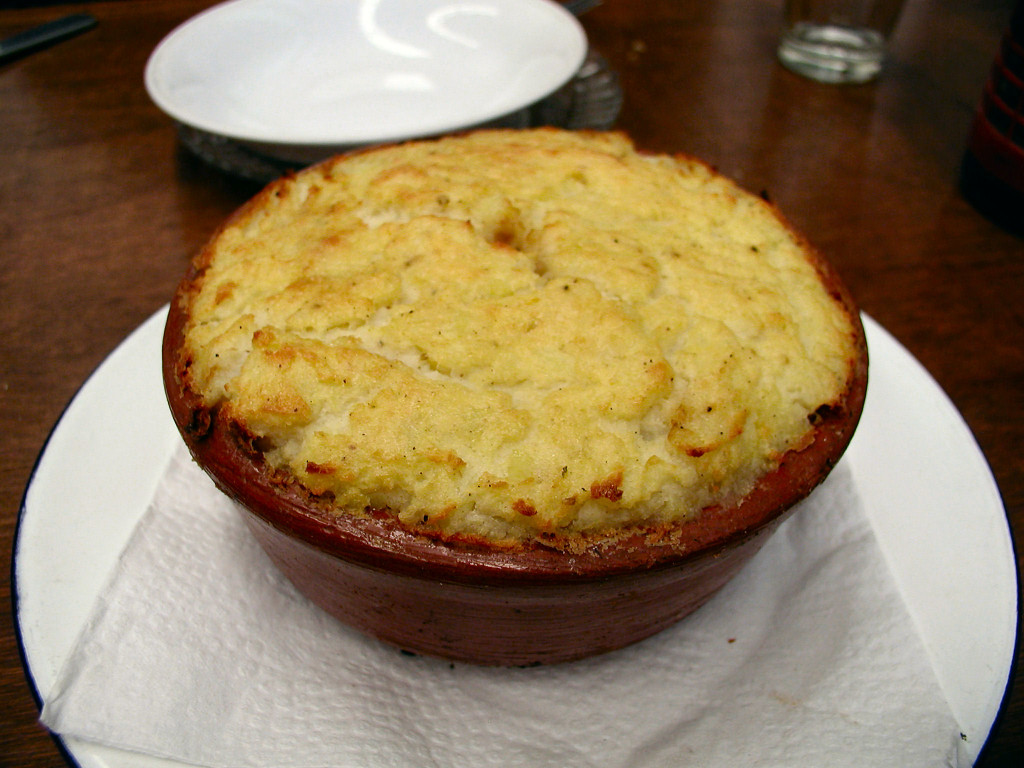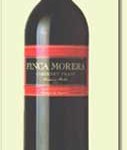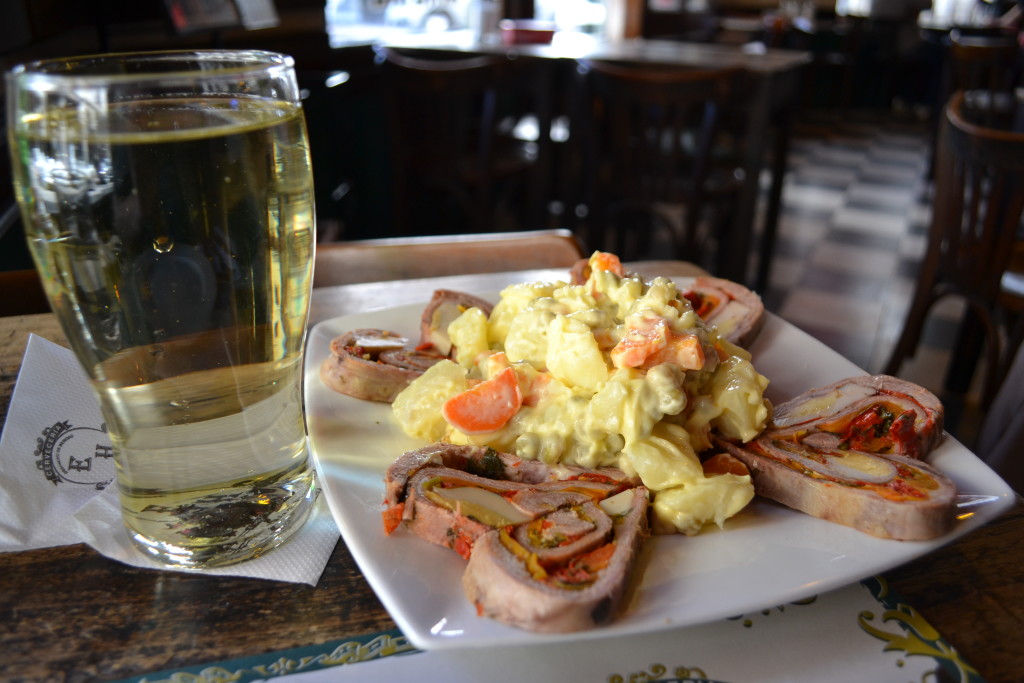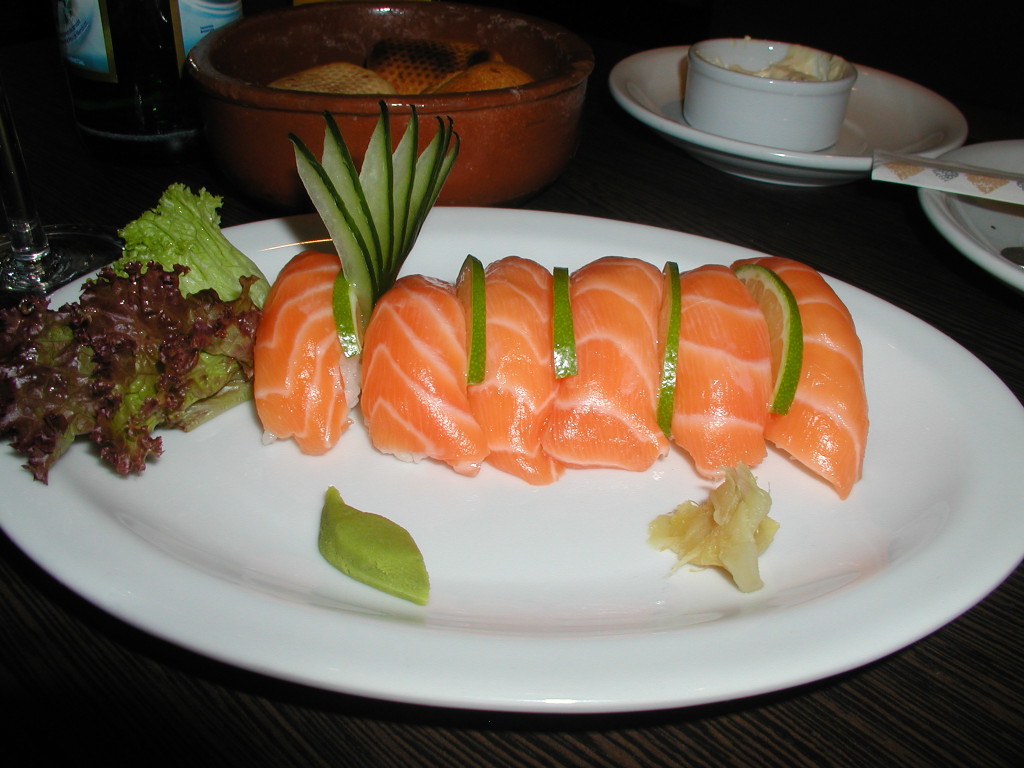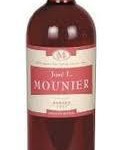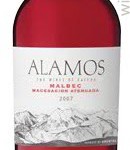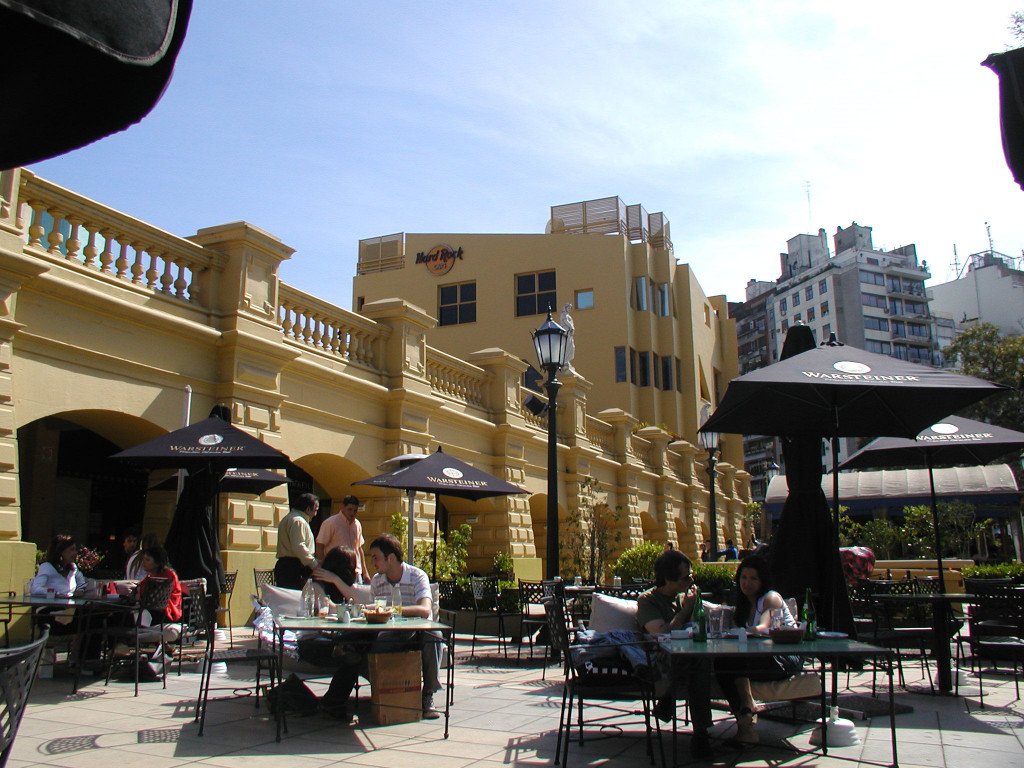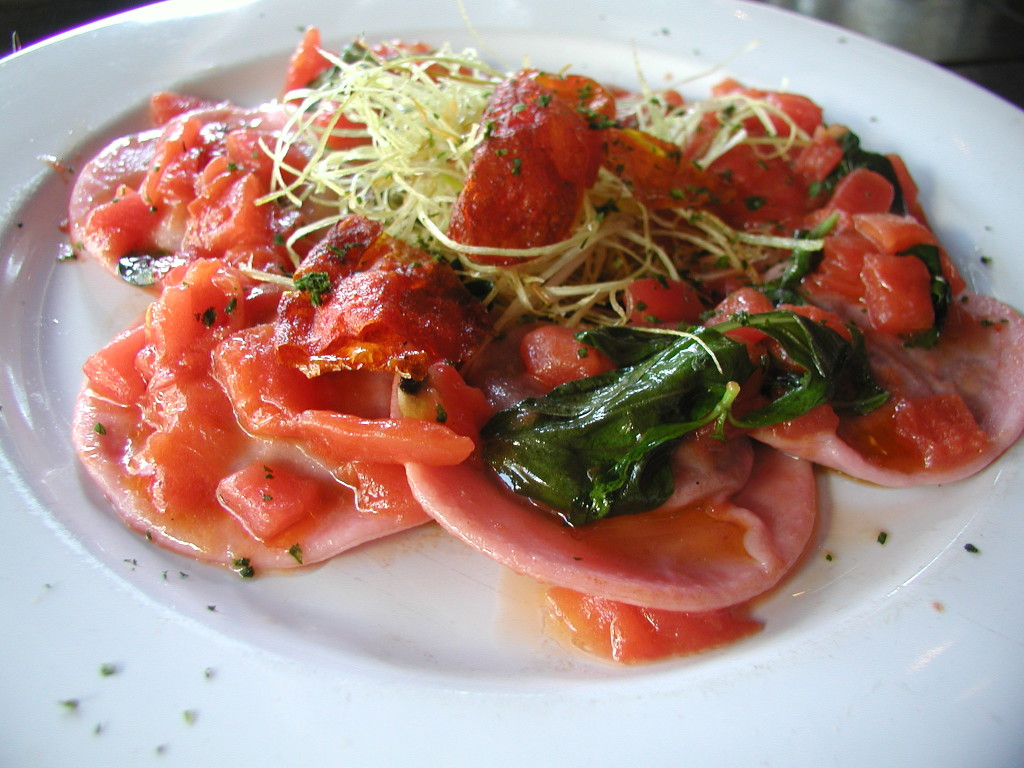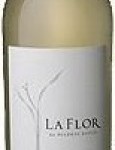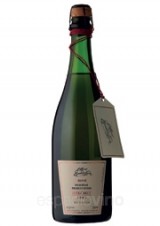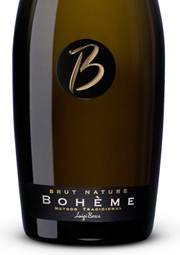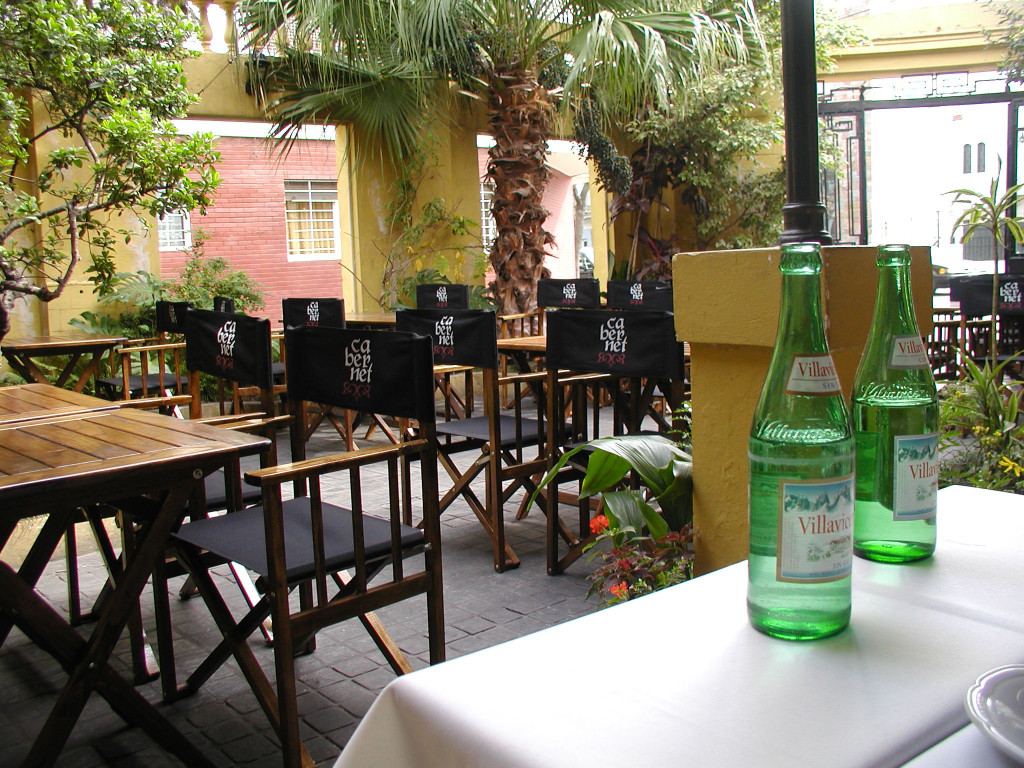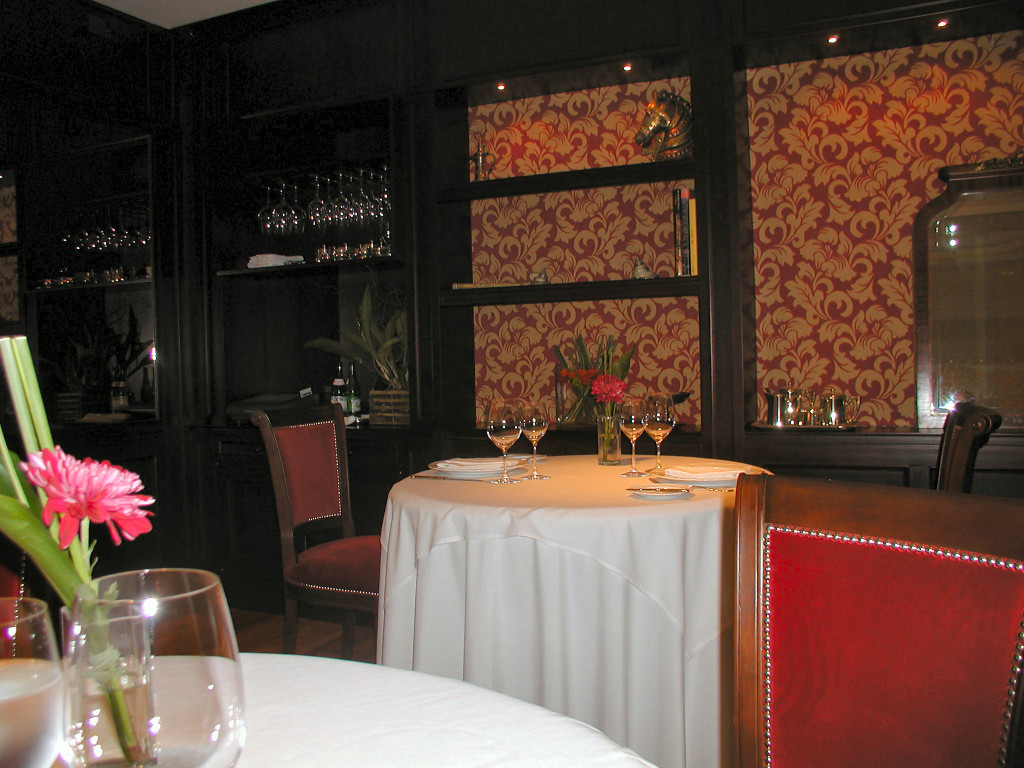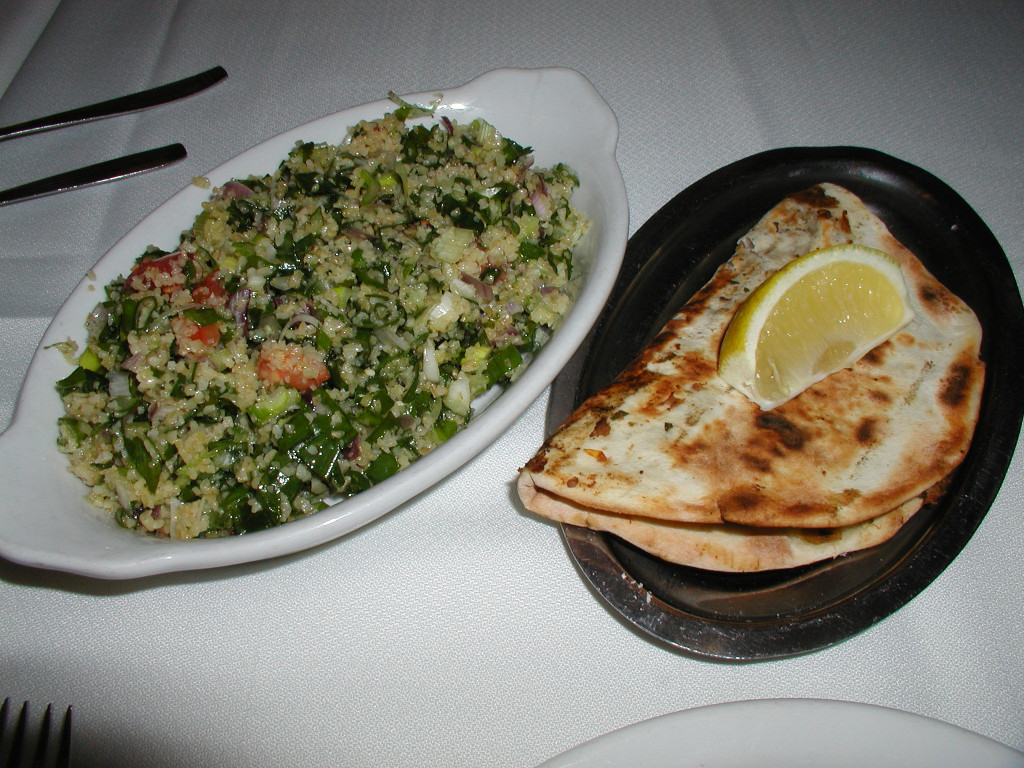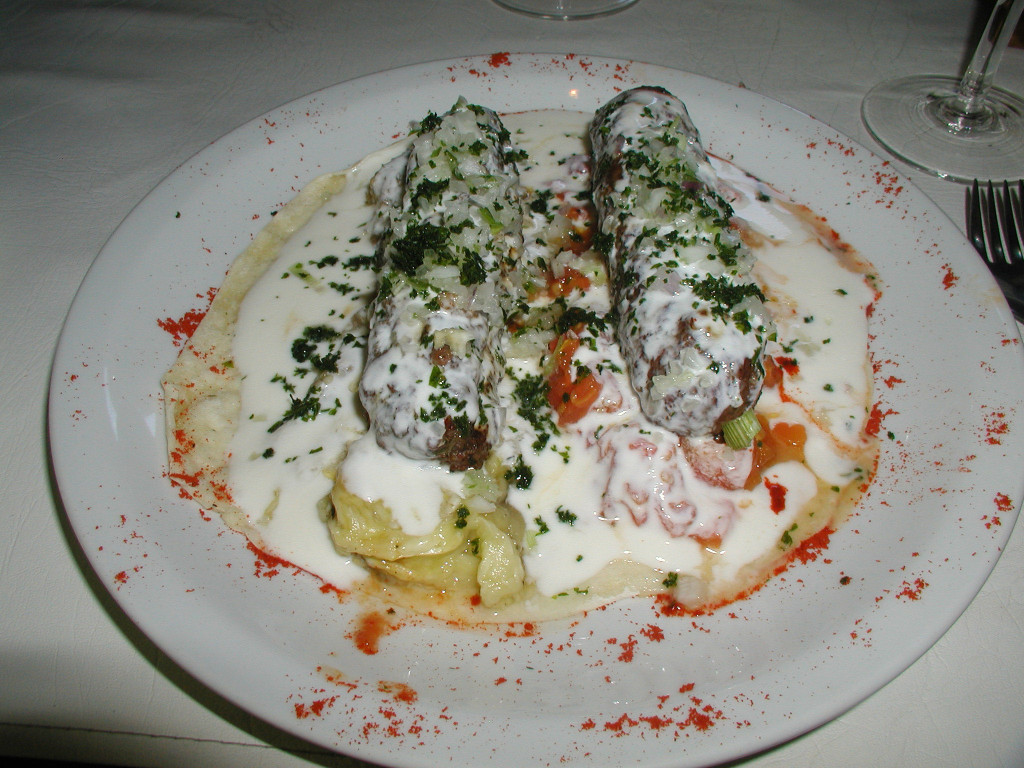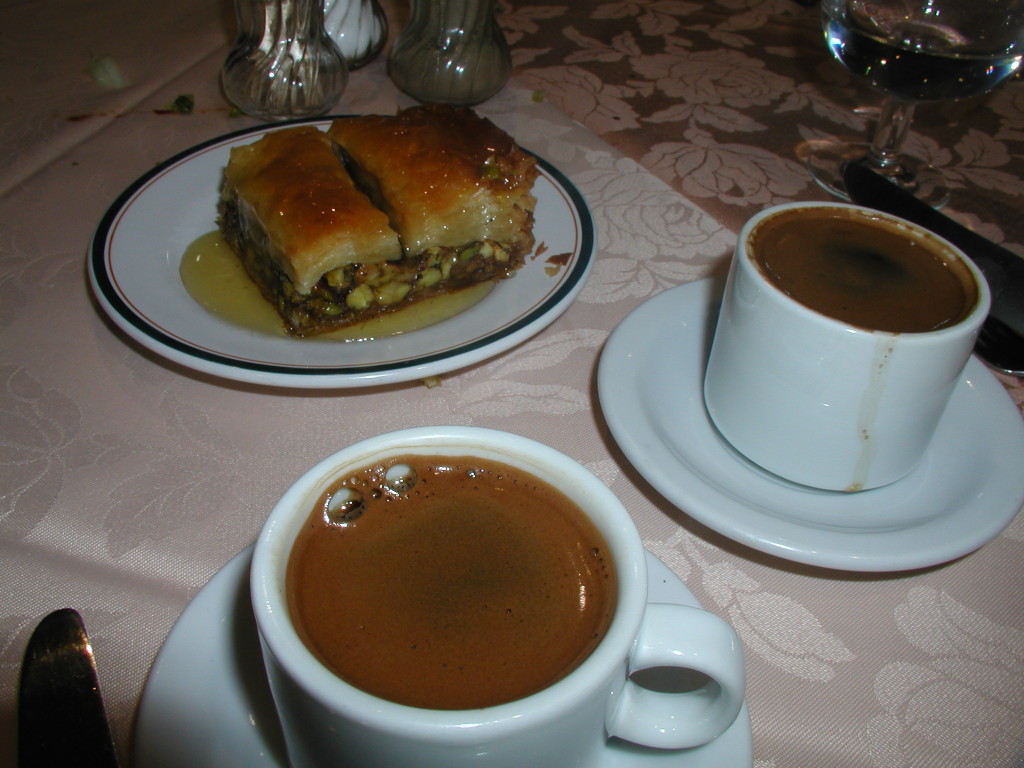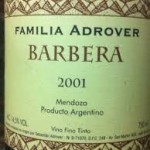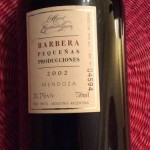El Sanjuanino, La Querencia, Syrah
June 2007, page 62
Argentina for beginners
As we move into colder weather, locals rejoice in the return of favorite winter stews to restaurants. For five or six months of the year we have the chance to enjoy locro, carbonada, lentejas, mondongo, and chacarero – dishes that have a tendency to simply disappear off of menus nearly city-wide during the warm weather months.
Still being an outsider (I’m informed that no one becomes a porteño until they have an immediate ancestor buried in either Recoleta or Chacarita cemeteries), I have the advantage of no personal attachment to these dishes, and enjoy exploring a variety of styles. Locro is probably the top of the heap for the various stews in Argentina. It’s a hearty, rich dish, that is based on hulled white corn or hominy. From there, the variations are endless, and there are meat, chicken, fish, and vegetable versions. A good percentage include a thickening agent in the form of pureed cooked squash, some include beans, various vegetables, and the cuts of meat can vary from high grade steak to “parts is parts” sorts of things that you’re best off not inquiring about. Carbonada is a beef or veal stew that includes dried fruit, usually peaches, to create a mildly sweet stew. Lentejas, or lentils, come in a wide variety, from stews with meat to vegetarian versions – you simply have to ask. Mondongo is a tripe and potato stew, often with beans or peas added. And chacarero is a chicken and sausage based stew, usually with some form of pasta added to it at the last minute. All these, are, of course, subject to your grandmother’s interpretation.
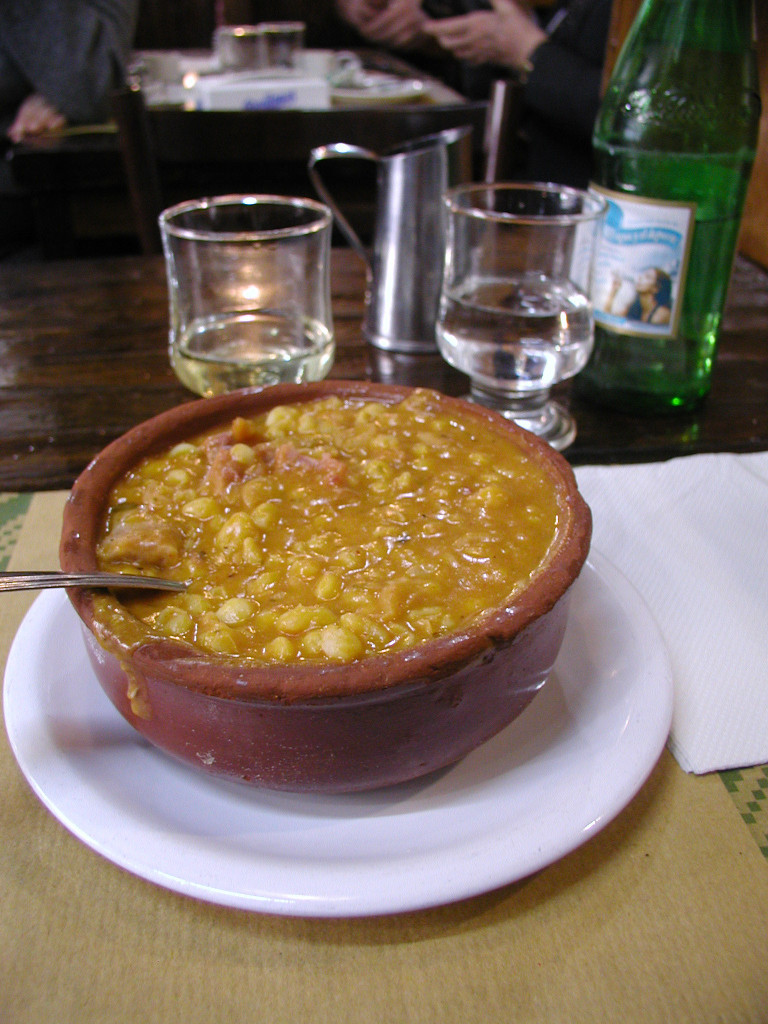
There’s one spot I recommend time and again to visitors and friends to sample some of the best Argentine “regional” cuisine. In specific, it’s the region of San Juan, along the western border of the country, just north of Mendoza. The restaurant, El Sanjuanino. They have two locales, one in Palermo, and my preferred one for both ambiance and service, at Posadas 1515 in Recoleta. They serve up one of the more “variety meat” laden versions of locro, and if that doesn’t bother you, it’s one of the better ones out there. On request, they’ll bring a bit of oil laden with chili flakes to spice it up a bit. They also offer some of the city’s better empanadas – their carne picante version is actually picante, and their “gran sanjuanino” is a deep-fried version packed with a filling reminiscent of a delicious homemade sloppy joe. Other dishes worth checking out, their matambre recoldo, a rolled flank steak packed with peppers, ham, and cheese and roasted in the coals, is a spectacular dish to share for two; and for those who are feeling adventurous, they offer stews of antelope and vizcacha, a sort of large rabbit-ish creature from the mountains.
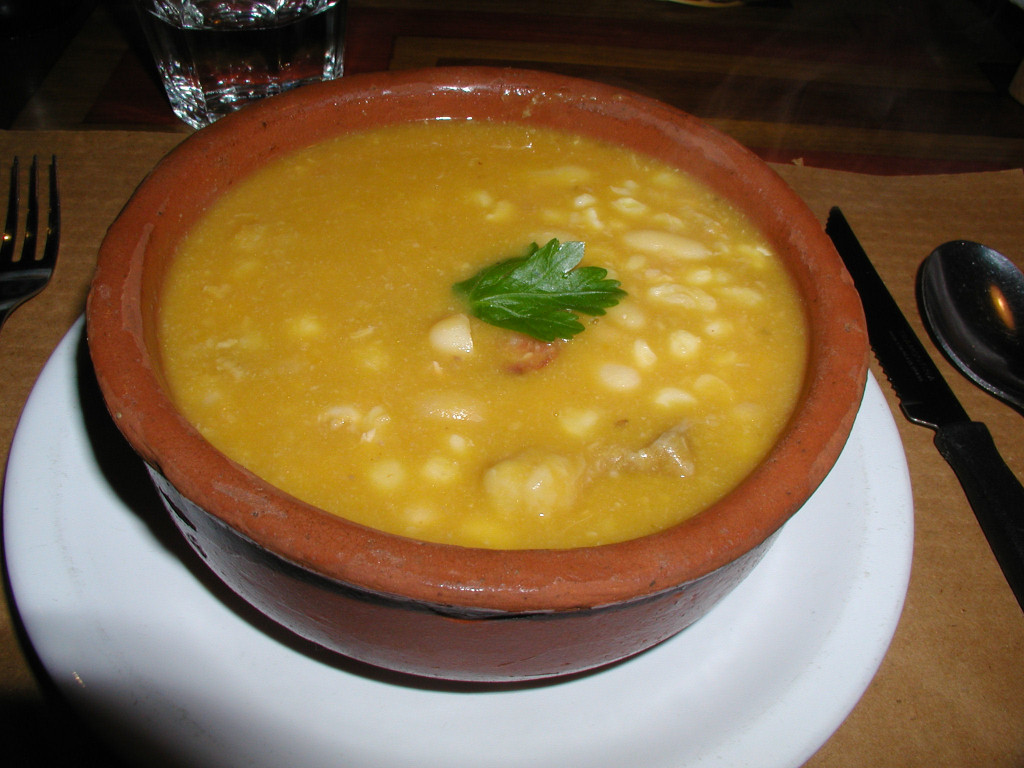
A classic in any of a dozen tourist guides is often a reason to simply avoid a place. It means the likelihood of being surrounded by others who are just as mystified by everything going on around them as you are. Yet, somehow, La Querencia manages to make visitors feel at home, and still attract a good following of locals. Located at the corner of Junín and Juncal, this spot offers up a mix of regional Argentine cuisine with a focus on the Tucumán area in the far northwest. Here you can sample locro, carbonada, or lentejas, in versions that are perhaps, suited to a slightly more refined palate – prime cuts of meat and sausages won’t challenge anyone’s sensibilities as to just exactly what part of the cow has been set in front of them. They also offer many other local specialties, including a great pastel de papas – more or less a shepherd’s pie; and revuelto gramajo – a fascinating scrambled egg, ham, potato, and (depending on whom you’re talking to) pea platter that’s served not just for breakfast, but lunch and dinner as well. La Querencia offers up some interesting empanadas that you won’t find in most other places, including several special vegetarian ones – the eggplant and mint ones are outstanding; a bacon and plum version; and the “del tambo” – a blend of seven different cheeses that’ll have you asking for another.
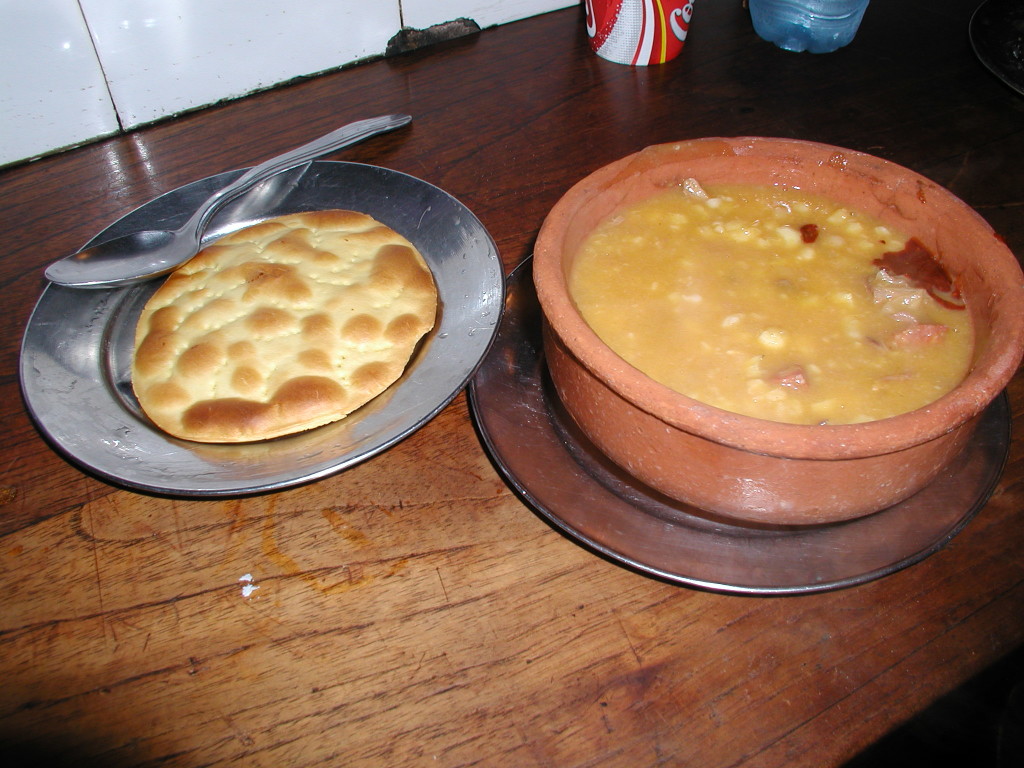
The last place I’d recommend is a personal favorite for locro alone. In fact, all they offer are empanadas and locro, and for most of the year, not the locro. But when they have it, the stew at la cocina, Pueyrredón 1508, right off of Avenida Santa Fe, is the best I’ve had. It mixes up a bit of the best of all the rest – sliced steak and sausages, a few bits of “other”, it’s simply packed with sweet white corn, beans, and squash, and is offered in picante and non-picante versions, the former using a fiery homemade chili oil, and with or without cheese melted into the mix. Their empanadas are pretty outstanding as well, with kudos going to the amusingly named “pikachu”- a caramelized onion and cheese empanada that’s absolutely delicious.
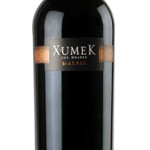 With stews like this, you want to go either with a simple carafe of whatever the house wine is, and just not worry about swirling and sipping – drink away and don’t worry; or, a big, bold, spicy red. I’m quite fond of a relatively new
With stews like this, you want to go either with a simple carafe of whatever the house wine is, and just not worry about swirling and sipping – drink away and don’t worry; or, a big, bold, spicy red. I’m quite fond of a relatively new ![]() Syrah from Xumek, the 2004 of which shows off easy drinking flavors of blackberries, black pepper, and a host of other spices. It’s inexpensive and a great value. Easily my favorite Argentine Syrah is from Tempus Alba, a version that reminds me of a good quality Rhône Valley Syrah with flavors of red plums, smoke, and bacon fat. The 2003 is available right now and is drinking beautifully. It’s a bit pricier, but still shouldn’t top more than 35 pesos in stores and maybe 50 in restaurants.
Syrah from Xumek, the 2004 of which shows off easy drinking flavors of blackberries, black pepper, and a host of other spices. It’s inexpensive and a great value. Easily my favorite Argentine Syrah is from Tempus Alba, a version that reminds me of a good quality Rhône Valley Syrah with flavors of red plums, smoke, and bacon fat. The 2003 is available right now and is drinking beautifully. It’s a bit pricier, but still shouldn’t top more than 35 pesos in stores and maybe 50 in restaurants.
In October 2006, I started writing for this Spanish language magazine, covering their English language section for travellers. I wrote for them for about two years. The copy editor, apparently not fluent in English, used to put each paragraph in its own text box on a two column page, in what often seemed to be random order, making the thread of the column difficult to follow. I’ve restored the paragraphs to their original order.
